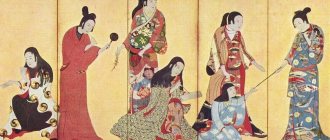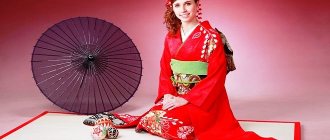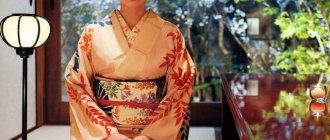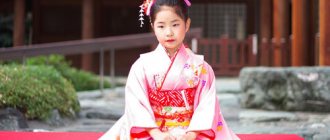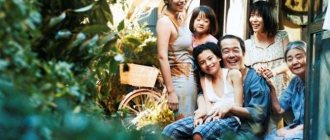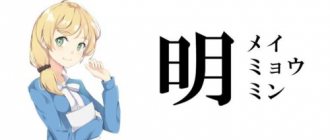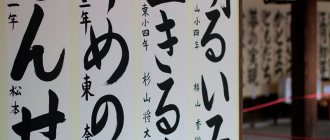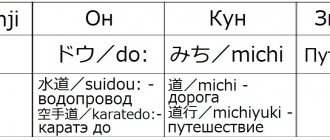What does a Japanese kimono consist of?
But did you know that the word kimono literally means “clothing and article” in Japanese? That's why in Japan they don't just talk about the kimono, it has become a symbol of an entire culture. There are countless different types of kimono, each for different events in a person's life, social background, age and gender.
Traditional clothing in Japan. Since the mid-19th century, it has been considered the Japanese “national costume”. Kimonos are also the work clothes of geishas and maikos (future geishas).
A kimono is usually made up of different garments that come together to form a single piece. It is sewn from 4 pieces of fabric in the shape of the Russian letter “T”. The kimono itself is a loose robe that a person wears. Clothes are tied with a belt or belt. This belt is called obi in Japanese. Finally, there is a knot that holds the obi together called the yushibi. There are also various accessories that can be added to an outfit, a scarf, a pillow or a lanyard. However, this depends on the type of kimono.
The kimono has a scent right for men and women, except for funerals.
Japanese kimono
Women's Japanese kimono is distinguished by an indescribable, incomparable color, subtle elegance of style, bright individuality of shapes and colors. The first mentions of this outfit can be found in ancient manuscripts dating back to approximately the 7th century AD. At that time, a traditional kimono model appeared, which in appearance resembled a swinging robe with long sleeves.
Subsequently, stylists created many variations based on the classic version, decorated it with additional decorative elements, increased the length and made the cut wider. Women's products were designed to demonstrate the beauty and grace of their owner, attract interested glances and increase her level of confidence in her own seductiveness and attractiveness.
For this reason, to create women's kimonos, only high-quality fabrics in bright colors have been used in the past and today. The main color accent is always placed on the obi belt. Fresh pink, light green, lilac, purple, and blue shades are often used. The use of floral and plant prints is widespread; seasonal motifs are popular - momiji maple leaves in autumn, sakura, peach or plum flowers in spring, thin matzo pine needles in winter.
Since ancient times, real women's kimonos have been made exclusively by hand, and this applies not only to cutting, joining and sewing parts, but also to painting and artistic design of fabrics. All necessary rules and secrets are inherited from the master to the successor. Meanwhile, today only expensive suits are made directly in Japan using this technology, and women's kimono-style dresses and other clothing are produced by many manufacturers using a standard system.
The emergence of traditional costumes
How did the kimono as we know it today come about? Around the year 1000, Chinese fashion became increasingly popular in Japan. This was mainly caused by mass migration from mainland Asia to Japan during this period. The kimono became more and more beloved in Japan, both among the male and female population. At that time they only wore mo, which was more like a skirt.
However, this changed during the Muromachi period (1392-1573). During this period, more and more Japanese began to wear their kosode (small sleeves), an item of clothing that had previously been considered underwear. This kosode was previously worn only as underwear, then it was done with trousers or a skirt. The Kosode is very similar to the kimono as we know it! Over the years, a number of small changes have been made, such as the length of the sleeves, but overall the kimono has not changed since then.
Over the centuries, countless different styles of kimono have been developed, each with its own function, meaning and ideal use.
While the kimono used to be the “normal” clothing of the standard Japanese, today this is no longer the case. In the 20th centuries, Western influences on Japan increased. More and more Japanese began to wear trousers and a shirt, as we are used to seeing in Russia. Emperor Meiji in the late 20th century decreed that officials, including police and teachers, must wear Western clothing. This trend has continued since then.
This is why traditional kimonos in Japan are now only worn for special occasions such as parties or weddings. Kimonos are also often used for tourism purposes or in films.
Did you know that a kimono is the standard outfit for every Japanese geisha?
Kimono for women
Contrary to what many people think, kimonos are not just for women. No, men have been wearing kimonos for over 1000 years. However, it is true that kimonos are most often worn by women, both in the past and today.
As already mentioned, there are many different types of traditional costumes. One kimono is designed for formal occasions, the other for more casual occasions. The degree of formality of this traditional Japanese clothing is usually determined by the color and pattern.
It's not just about what kimono to wear. A woman's age and whether she is married also play a role.
The most common or "standard" kimonos for women are Furisode, Mofuku, Jūnihitoe and Komon.
Kimono for obese women
Although women's kimonos are great for those with any body type and build, they look especially good on ladies with appetizing curves. Thus, thanks to its special cut, this product hides plump arms and massive hips and generally gives the silhouette of its owner a feminine and sophisticated look.
Women's home kimonos and other clothing based on the Japanese national costume are also great for girls with a protruding belly, however, they should tie a belt above the waist line. In addition, plus-size ladies should in all cases choose wardrobe items in darker color shades.
Mofuku
Many modern Japanese women have lost the skill of putting on a kimono themselves: a traditional kimono contains twelve or more separate parts, so if necessary, they often turn to specialists in this field - otokoshi
Mofuku kimonos are worn in Japan only when someone has died. They are completely black and are worn only by those who were close to the deceased. Under the black kimono, people wear white silk underwear.
Juni-hitoe
Both women's and men's kimonos are worn with a wrap to the right.
At the funeral, the body is dressed in a kimono with a wrap to the left, they say, “The world after death is the opposite of our world.” Jūnihitoe is not just a kimono. No, these are the most complex, beautiful and therefore the most expensive kimonos! This is why they are only worn by women of the Japanese imperial family or people who work for them. The Jūnihitoe kimono is made up of several layers of fabric, each with its own unique colors and patterns. By the way, such kimonos are not cheap: they often cost tens of thousands of euros. They are also very heavy, weighing up to 20 kg. Currently, Jūnihitoe is only worn in the Japanese Imperial Palace. They can also be admired in various museums and exhibitions.
Features of kimono
What is a traditional kimono? Typically, it is a loose robe that falls to the calf, with fitted sleeves to the wrist and a V-neck. The kimono is wrapped around the body from left to right. The wide belt of the Japanese kimono (obi) is fixed at the back. It is worth paying attention to some features of traditional Japanese clothing:
- Women's kimono has only one size. In order for it to be worn by women of different builds, the “tails” and sleeves are rolled up. Modern fashion allows you to buy outfits of various sizes.
- It is a rare woman who is able to put on a kimono on her own. As a rule, outside help is required for these purposes, since the traditional costume consists of 12 different parts that must be carefully adjusted to each other in accordance with centuries-old tradition.
- The men's kimono is much simpler - it consists of only 5 parts.
- In Japan, there is a need for professional dressers who can help you choose a high-quality outfit.
- Sumo wrestlers cannot appear in public places without a traditional costume.
In ancient times, it was difficult to take care of clothes. In order to clean and wash a traditional Japanese kimono, it was necessary to rip it open and sew it back together again.
Komon
Unlike traditional European clothing, which emphasizes the structure of the human body, a kimono highlights only the shoulders and waist of the wearer, hiding the flaws of his figure.
Komon style kimonos are the most common as they are designed for everyday use. The Japanese word Komon means "pattern". Thus, kimono-komons have a beautiful permanent pattern.
Of course, there are many other styles for women besides these four styles, but these are the most important and common.
KIMONO IN JAPAN video
By far, silk is the most common type of fabric from which Japanese clothing is made. Kimono is not a cheap pleasure. It is sewn using a single piece of fabric - which is why it is difficult to find for large people. For example, the average cost of traditional Japanese clothing varies between $10,000, and a complete set for handmade ceremonies can easily exceed $20,000.
Today, the kimono has lost its status as everyday wear - it is worn only for special occasions. Men may dress in traditional costume for a tea ceremony, on their wedding day, or when attending national sporting events. And even though progress and urbanization confidently march across the planet, there are still people for whom kimono is still an art.
What about men?
Yes, kimonos are for men too! Okay, in the West you won't see men wearing them outside of the sauna or gym, but in Japan, kimonos are popular among men. The kimono has been a staple garment for over 1000 years. There are many differences between men's and women's kimonos. The most important of these is that kimonos for men are much simpler. The colors are often dark, muted and have a subtle pattern. The darker the color, the more formal the kimono. Of course, there are differences in terms of quality, material and price.
Views: 6,187
Share link:
- Tweet
- Share posts on Tumblr
- Telegram
- More
- by email
- Seal
Liked this:
Like
